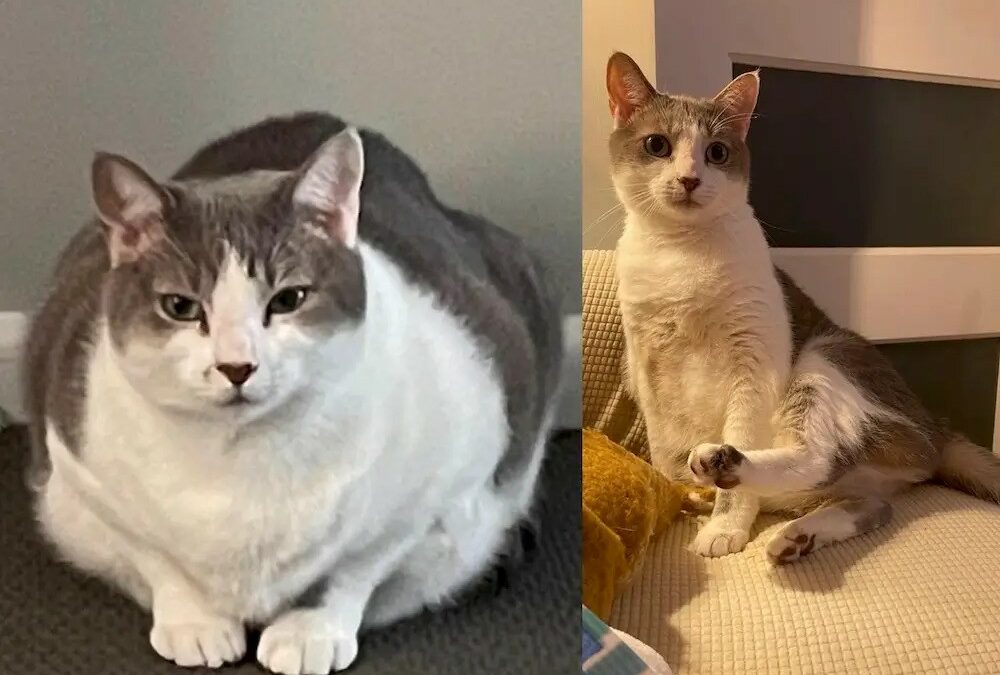Helping a cat achieve a healthy weight involves a combination of diet management, exercise, and monitoring. Here are some effective tips for weight loss in cats:
1. Consult Your Veterinarian
- Health Assessment: Before starting any weight loss program, get a thorough health check-up for your cat. Your vet can determine if there are any underlying health issues and provide a target weight and a safe rate of weight loss.
- Personalized Plan: Your vet can recommend a tailored weight loss plan, including dietary changes and exercise recommendations.
2. Controlled Diet
- High-Quality Food: Switch to a high-quality, nutritionally balanced cat food designed for weight loss. These foods often have fewer calories but still provide essential nutrients.
- Portion Control: Measure your cat’s food to control calorie intake. Follow the feeding guidelines provided by your vet or the food manufacturer.
- Scheduled Feeding: Feed your cat at regular times rather than leaving food out all day. This helps control portions and prevents overeating.
3. Increase Activity
- Interactive Toys: Use toys that encourage exercise, such as feather wands, laser pointers, or balls. Regular playtime helps increase your cat’s activity level.
- Cat Trees and Scratching Posts: Provide climbing structures and scratching posts to promote physical activity.
- Engage in Play: Dedicate time each day to actively play with your cat. Aim for short, frequent play sessions.
4. Monitor Progress
- Regular Weigh-Ins: Weigh your cat regularly to track progress. Your vet can help set up a schedule for weigh-ins.
- Body Condition Scoring: Learn to assess your cat’s body condition using a body condition score chart to gauge if they are losing weight appropriately.
5. Limit Treats and Table Scraps
- Treats in Moderation: Reduce the number of treats you give and ensure they are low-calorie options. Treats should not exceed 10% of your cat’s daily calorie intake.
- Healthy Alternatives: Consider using small amounts of your cat’s regular food as treats or offering low-calorie alternatives.
6. Encourage Hydration
- Fresh Water: Ensure your cat always has access to fresh, clean water. Proper hydration supports overall health and can help manage appetite.
7. Manage Stress and Environment
- Comfortable Space: Provide a stress-free environment. Stress can sometimes contribute to changes in eating habits and weight.
- Safe Environment: Make sure your cat’s living environment is secure and comfortable, reducing stress-related overeating.
8. Gradual Changes
- Slow Adjustments: Make changes gradually to avoid upsetting your cat’s digestive system or causing undue stress. Sudden changes in diet or routine can be disruptive.
9. Regular Veterinary Check-Ups
- Ongoing Evaluation: Regular vet visits ensure that your cat’s weight loss is on track and that there are no health issues affecting their progress.
By following these tips and working closely with your veterinarian, you can help your cat achieve and maintain a healthy weight. Remember, weight loss should be gradual and consistent to ensure it is safe and effective.
4o mini

